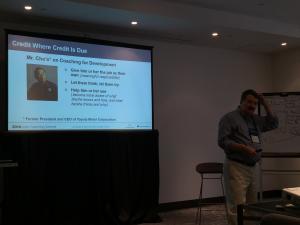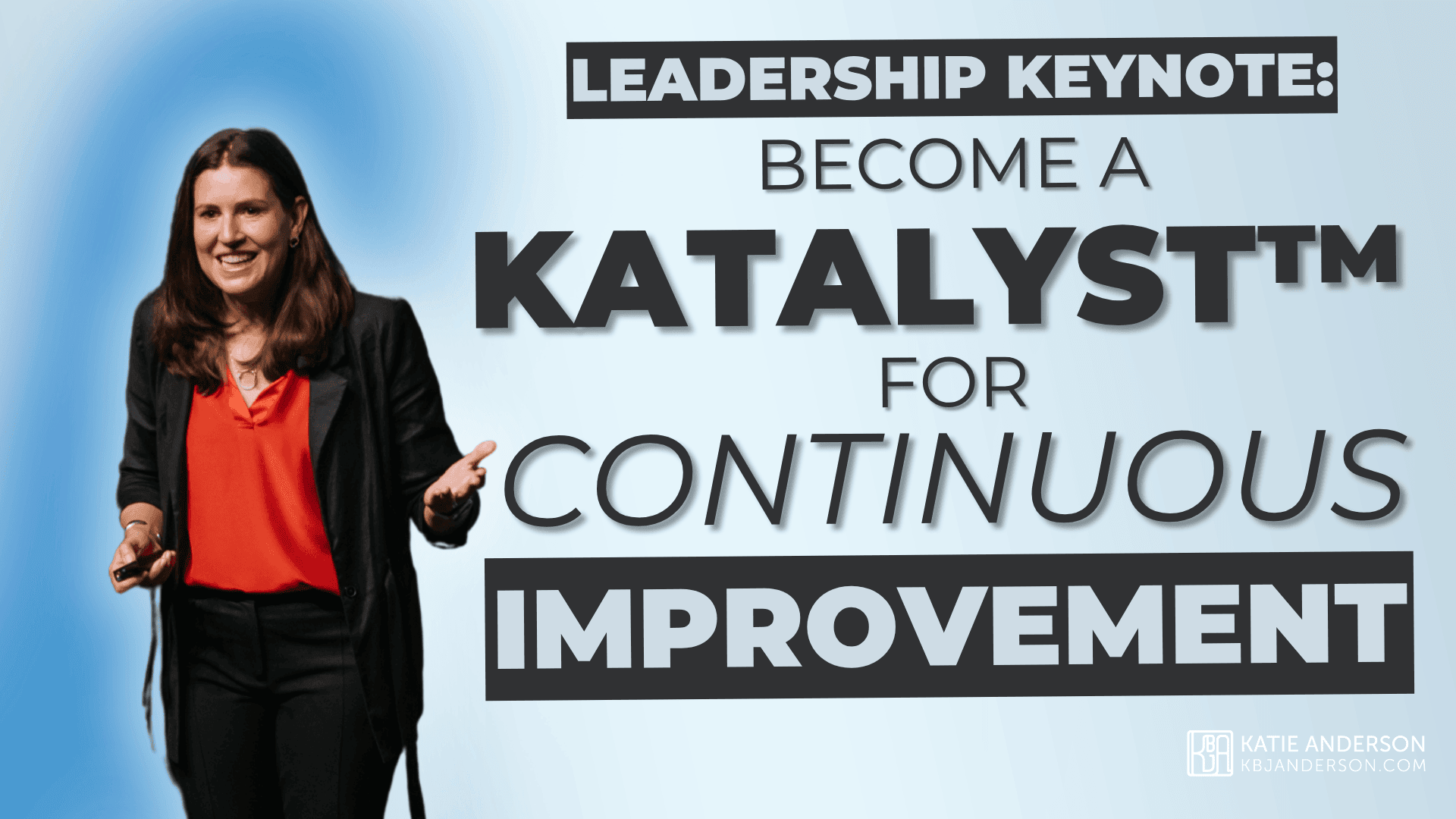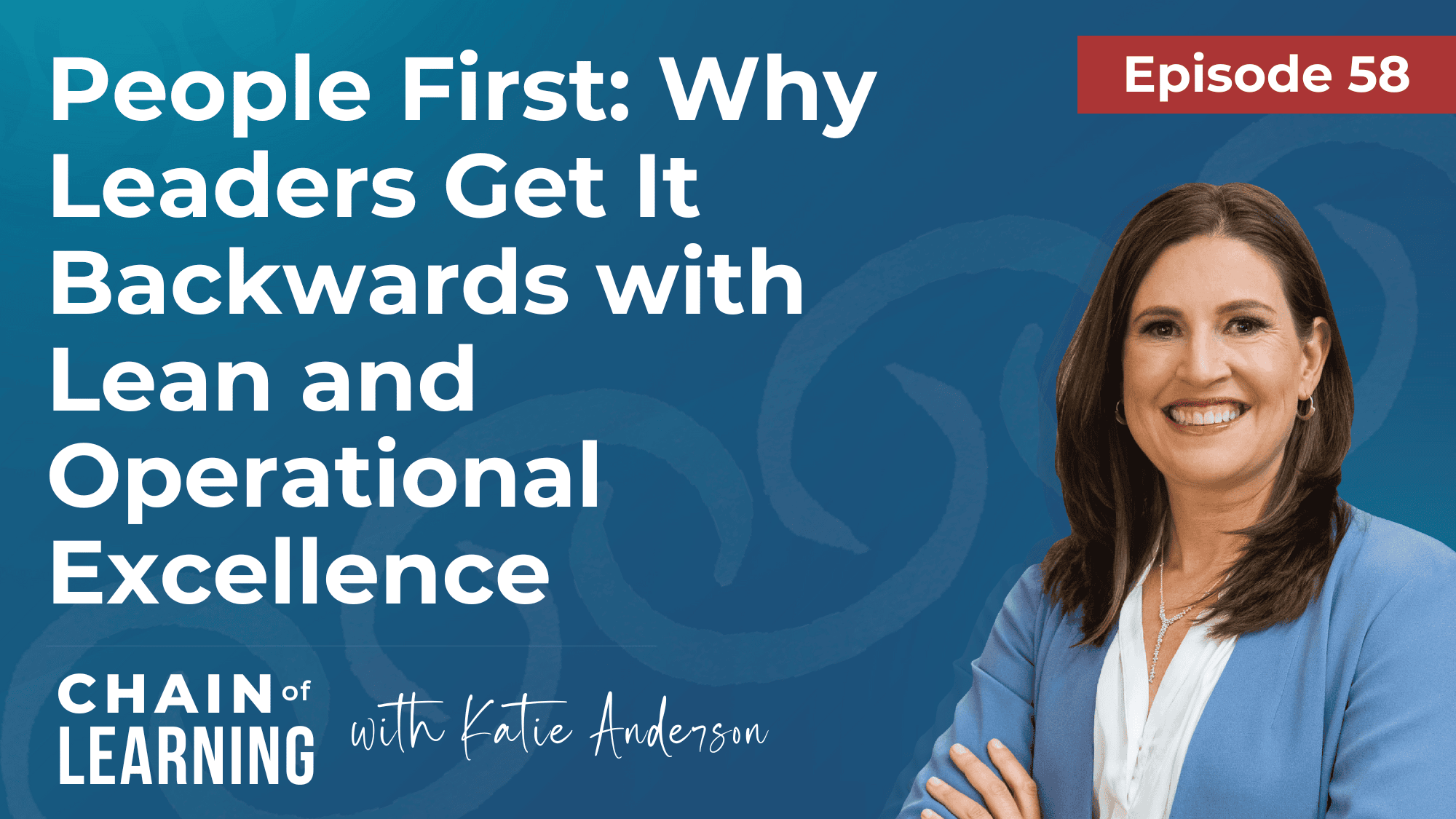I just came back from presenting at the 5th Annual Lean Coaching Summit held in Minneapolis, Minnesota, last week. This Summit was the third consecutive Lean Coaching Summit that I’ve attended and the second at which I was a presenter.
I always enjoy meeting other lean practitioners and coaches at the event – and I enjoy teaching and presenting too!
I shared my notes and reflections from the 2015 Lean Coaching Summit on this website and as an article for the Lean Post, and want to share my reflections on this year’s Summit with you too. Lean Post article forthcoming.
Free coaching guide
If you missed the Coaching Summit, I’ve made available the coaching guide that we created for the Summit to apply A3 thinking to personal improvement. You can get your own free copy of the coaching guide by clicking here.
The theme for the 2016 Lean Coaching Summit: Preparation
The theme for this Lean Coaching Summit was “preparation”. As described in the conference notes brochure:
“While we must be aware of the challenges being faces by those we coach, so too must we recognize and tend to our own. Preparation takes time and doing it well requires practice.”
While not everyone made this theme explicit in their presentations, the content of most talks or sessions was about how can we as coaches continue to get better as coaches:
- How can we better meet our learners where they are at?
- How can we stay focused and in the moment on what the learner needs?
- And how can we continue to augment our skills as Lean coaches
Looking forward to sharing & learning at Lean Coaching Summit next week. Will you be there too? #leancoaching16 pic.twitter.com/TDjIybzpFp
— Katie Anderson (@kbjanderson) July 18, 2016
“Everyone is a teacher and everyone is a learner”
True to this quote by John Shook that I always share when I’m teaching or presenting, I came to the Summit as both teacher and learner.
Teacher
As a teacher, my intention was to share a process that I have found valuable as a coach – using the A3 thinking framework focused on personal improvement. I’ve written about the power of practicing personal problem solving in previous posts and co-presented an overview of the process with Margie Hagene at the 2014 Lean Coaching Summit.
In the spirit of this year’s Lean Coaching Summit theme, my colleague Michelle Gabriel and I focused our session on how a coach can use the personal improvement A3 thinking process to better prepare for coaching sessions, and ultimately how the process helps better prepare the learner to create the new leadership habits he or she desires.
I’ll share more details about our break-out session and the personal improvement A3 thinking process in subsequent posts. Stay tuned!
[Update: this post is now available: “Coaching for Improvement: Using A3 Thinking For Personal Development (Part 1 – Overview from Lean Coaching Summit)“
You can also click here to receive a free copy of A3 coaching guide that we created for the Lean Coaching Summit].
As I promised in my last post too, I gave away several Japanese Daruma dolls to participants who attended our session. Two even had birthdays during the Summit!
Learner
I also came to the Summit with the desire to learn from many other coaches and Lean practitioners, with the intention of how I can continue to improve my own coaching practice.
The format of this year’s Lean Coaching Summit supported diversity of learning and engagement. There were only two keynote speakers – one each day – with the bulk of the Summit time allowed for three breakout sessions of 90 minutes each. The same sessions were offered on both days.
Since I was a presenter during one of the three time blocks, I had less time as a “learner” than last year. I took something away from each of the sessions I attended – and I would have loved to attend some of the sessions held in my same time-block as I heard great things about them!
I think the Summit format is the best of the three I have attended, and I encourage the organizers to continue to look at ways the format can continue to build in even more practice time.
The focus of this post is on some of the key take-aways I had from the Lean Coaching Summit as a learner.
2016 Lean Coaching Summit Take-Aways
The following is not comprehensive, but are some of the quotes and points that stood out for me from this year’s Lean Coaching Summit. I wish I could have gone to more of the breakout sessions as there was a great selection this year!
Keynotes
 Day 1 – Tony Lamberton
Day 1 – Tony Lamberton
The opening keynote by Tony Lamberton about applying Lean in education in the UK was an interesting one.
I enjoyed hearing Tony’s story about how he was inspired by reading some Lean books about Toyota and thus started a transformation of his school system.
Tony of course brought in some Commonwealth sports analogies to his talk too and gave us all a lesson in cricket!
#Lean in education: "poorly performing schools operate under PUSH". Better schools operate under PULL system. -Tony Lamberton #leancoaching
— Katie Anderson (@kbjanderson) July 27, 2016
 Day 2 – Kathryn Correia
Day 2 – Kathryn Correia
The keynote on the second day was by Kathryn Correia, the President and CEO for HealthEast in Minneapolis and a former senior leader at ThedaCare in Wisconsin.
I enjoyed Kathryn’s storytelling of her personal journey as a leader and a coach of others.
She started her presentation with this anchor quote, which resonates with me:
#Experience is what you get when you don't get what you want." Engaging keynote by K.Correia #leancoaching summit
— Katie Anderson (@kbjanderson) July 27, 2016
The question then is: how do we learn from and improve from the experiences we have?

Coach yourself out of a job
I liked the provocative question David Verble posed in the title of his session: “What if you can’t be promoted unless you have a capable replacement ready?”
It is critical for us to think more deeply about how we are developing those who work for us:
- What skills are actually needed for the role?
- What is the current skill level of those who you are developing?
- And what and how will you give them meaningful responsibility (with your coaching) to close the gap in their current ability and the required ability for the role?
How are you developing your successor? "You can put anyone in the position, but can s/he fill the role?" -D.Verble @LeanDotOrg #leancoaching
— Katie Anderson (@kbjanderson) July 27, 2016
What meaningful responsibility will you give someone as a way to develop? How are you developing your successor? D.Verble #leancoaching
— Katie Anderson (@kbjanderson) July 27, 2016
Toyota Kata
I was looking forward to attending Skip Steward’s presentation and to finally meeting him in person. Skip and I “met” through social media and this blog, and have not only a shared passion for Lean leadership in healthcare, but he too is a friend of Isao Yoshino (John Shook’s first manager at Toyota who has become a close friend and mentor over the past two years).
Great experience speaking at the Lean Coaching Summit & learning from my friend @kbjanderson Katie Anderson! pic.twitter.com/ewAvjnHkiB
— Skip Steward (@SkipSteward) July 27, 2016
Skip is an engaging speaker and shared his experiences of how TWI and Toyota Kata have made him a better coach and the results they have had in changing leadership behaviors at Baptist Memorial Health System.
The follow comment from Skip really resonated with me based on my experiences learning from Mr. Yoshino about his 40 years with Toyota and from visiting with other Toyota leaders in Japan such as in Kyushu and Toyota Memorial Hospital in Toyota City:
#Management systems are incredibly fragile. Toyota has a deep appreciation for entropy." Shared by @SkipSteward at #leancoaching summit
— Katie Anderson (@kbjanderson) July 27, 2016
Beth Carrington also spoke about Toyota Kata and highlighted aspects of Mike Rother’s description of Toyota’s Improvement and Coaching Kata for the group.
A comment from Beth that stood out to me when we are coaching (particularly to senior leaders around strategy):
Ask not what can we improve, but rather what we NEED to improve. @KATAMatters #leancoaching @LeanDotOrg
— Katie Anderson (@kbjanderson) July 27, 2016
This is a great question for all coaches (and leaders) to remember! How are we focusing on the most important levers of change?
Mindfulness and Mindset
There were also several sessions that focused on understanding the mind.
Mindfulness
I wasn’t able to attend Mike Orzen’s talk on mindfulness as it was held at the same time my sessions were, but I heard great things about it. From my own (fledgeling) practice on mindfulness (as discussed in the comment sesion in my recent post about darumas), I concur that staying present and focused in the moment when we are coaching someone is an essential skill. I hope to hear Mike speak sometime about his practice of mindfulness as a coach.
Resistance
I also didn’t get to hear Ron Oslin and Holt Livesay talk about coaching resistors who are not open to changing their mindset or behavior, as it too was at the same time as mine. Ron’s session at the 2014 Lean Coaching Summit was a standout one to me. I have brought elements of what I learned from that presentation about using motivational interviewing as a technique for coaching resistors into my coaching and teaching.
Neuroscience
Vicki Egan and Suzanne Lahl shared research about how neuroscience impacts our mindset and behavior. By better understanding how our mind works, we can be more effective as coaches in helping our learners uncover the patterns in their behavior and how past experiences shape our current mindset.
I made a note to myself that when coaching a learner through a personal improvement process (such as using the personal A3 process that I shared in the breakout sessions) a reminder to ask about unconscious mindsets and to help the learner go deeper into understanding how past patterns of behavior have impacted their current mindset and habits.
A few observations about Japanese versus American culture at conferences
In addition to the content at the Summit, a few small cultural observations between attending a conference in Japan versus in the United States stood out to me.
Business cards
I came prepared to the Summit as if I was going to a professional event in Japan – with about 100 business cards! I recently updated mine and ordered new ones as I had run out of the ones I had made the previous year.
In less than 18 months in Japan, I must have given away (and collected!) more business cards than I had in the nearly 20 years of my professional career! Business cards are very important in Japan, and there is a strict “kata” (routine) that goes along with giving and receiving them. Suffice to say, in an American context, I maybe gave away a quarter of the ones I brought!

Order of names on badges
Also, an interesting point compared to a few conferences I went to in Japan is in regard to the placement (and thus emphasis and relative importance) of individual versus company name.
In the U.S. (and Australia – the other country in which I’ve attended professional conferences recently), the emphasis on name badges is on the individual’s name. The individual’s name is listed first and is usually bolded, the the company’s or organization’s name listed below.
In Japan, it was the opposite. The company name is listed on top in the most prominent place, with the individual’s name secondary. In Japan, you are a member of your organization and this is paramount.
You can see photos of my name badges from some Japanese conferences I attended last year such as this Lean healthcare one and this biomedical innovation one.
What do you think?
What resonates with these take-aways that I have from the Lean Coaching Summit? And, if you attended the Summit last week, what were some of the standout lessons for you?
Please leave your comments below.













